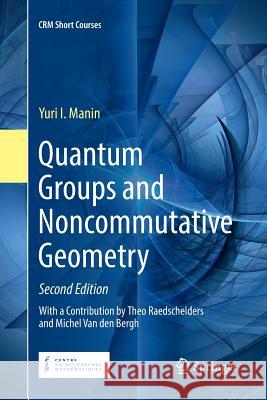Quantum Groups and Noncommutative Geometry » książka
topmenu
Quantum Groups and Noncommutative Geometry
ISBN-13: 9783030074326 / Angielski / Miękka / 2018 / 125 str.
Kategorie:
Kategorie BISAC:
Wydawca:
Springer
Seria wydawnicza:
Język:
Angielski
ISBN-13:
9783030074326
Rok wydania:
2018
Dostępne języki:
Numer serii:
000819460
Ilość stron:
125
Waga:
0.20 kg
Wymiary:
23.39 x 15.6 x 0.74
Oprawa:
Miękka
Dodatkowe informacje:
Wydanie ilustrowane











